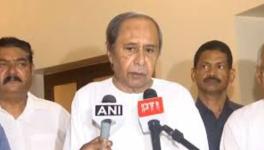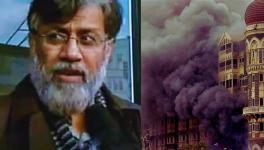BJP MP Cancels Celebration of Mahisha Dasara in Mysuru

It seems like the ruling Bharatiya Janata Party (BJP), the political wing of the Rashtriya Swayamsevak Sangh (RSS), believes in doing away with cultural diversity and crushing cultural dissent. This can be seen in the recent move by a BJP MP from Mysuru, Pratap Simha, preventing an event called ‘Mahisha Dasara’, which was scheduled to be held on September 27.
Mahisha Dasara is an event organised by various dalit organisations, progressive organisations from Karnataka as a counter to the Dasara celebration in the Mysuru palace and elsewhere in the state. The Wodeyar royal family of Mysuru celebrates Dasara every year with a royal fanfare to mark the killing of a “demon” Mahishasura by Chamundeshwari. Mahisha Dasara, therefore, has been organised for a few years now against the upper-caste narrative of Mahishasura being a demon. This non-religious event sees a gathering of a variety of dalit and rationalist groups under the banner of ‘Mahisha Dasara Organising Committee’. They gather in front of the statue of B R Ambedkar at the town hall of Mysuru and then go to the statue of Mahishasura situated at the Chamundi hill, in a cultural procession. Mahishasura, indigenous people believe, had come to this region centuries ago to promote Buddhism.
According to the media reports, this year, Simha publicly derided senior police officials atop the Chamundi hill for permitting the erection of a stage and providing facilities for the event after which the event was banned and Section 144 of the CrPC was imposed in the city. However, this is not the first time that a counter-narrative to a mainstream narrative is being crushed. Earlier, the Ambedkar-Periyar study circle of the IIT (Madras) has been at the receiving end of outrage for endorsing an event called ‘Ravanleela’ in Chennai.
Ravanleela, like Mahisha Dasara, is a counter narrative which was promulgated by the social reformer, Periyar. Ravana is considered to be a dravidian who was killed by Rama, a foreigner from the North. In Ravanleela, effigies of Rama, Lakshman and Sita are bunt the way effigies of Ravana, Meghanath and Kumbhakaran are burnt in the North India.
The issue at hand is not just about these “events” being cancelled. These events represent a mythology of the oppressed and non-brahmins in the country. And the cancellation of these events signify rejection of this mythology and the history of oppression of the non-brahmins in the country. Now, dalit organisations from the state are protesting and demanding the arrest of Pratap Simha.
This, however, is not the first time that Mahishasura is at the centre of a controversy. In 2017, Smriti Irani, the then human resource development minister, had kicked up a storm by objecting to JNU students observing Mahishasura Martyrdom Day on the campus.
Many Mahishasuras
As Cynthia Stephen, a dalit activist and a writer writes, “The name “Mysuru” is derived from “Mahishasur”, whom folk traditions recall as a local chieftain known for his courage and generosity. But the Purana tradition depicts him as an Asura – a Rakshasa – who used his supernatural and extraordinary powers to harass the locals. Heeding their prayers, the goddess Parvati descends in her fierce form and, following an epic battle, slays the “demon”, who attains moksha at her feet. This encounter appears in the popular iconography in all the Durga Puja pandals as the slaying of a dark-skinned, curly-haired man. Clearly, this is the representation of a political conquest – the conquest of an indigenous people’s leader by an intruder. As Amrish Herdenia of the Forward Press writes Ravana and Mahishasur are worshipped in many parts of the country. Tribals believe that the invader Aryans conspired and killed both of them.”
Also Read: Why Dalits are Turning Against the BJP
In fact, in 2017, two organisations—Adivasi Yuva Sangathan and Jai Adivasi Sangathan—had launched a campaign opposing Ravana Dahan (the burning of the effigies of Ravana). A representation made by the residents of Chhattarpur, Dhased and many other villages, had said that Ravana, Meghnad and Kumbhakaran were the family deities of the Tribals and burning their effigies was violation of the fundamental right to religious freedom, granted to all citizens under Article 25 of the Constitution. The Adivasis had asked the administration to put a stop to the Ravana Dahan programmes held in Sarni and Pathakhera during Dussehra. The written representation said that Ravana was a benefactor of the Tribals.
Also Read: Modi 2.0: Majoritarianism Normalised?
Even as the RSS wants these counter narratives to be stubbed, they continue to exist, facing the dominant upper caste narratives of oppression. Take the example of festivities of Dasani in Purulia, West Bengal. Dasani is the celebration of sadness caused by the killing of Mahishasura, who is known here as Hudurdurga. Ajit Prasad Hembram, an Adivasi activist belonging to the Kherwal branch of the Santhal tribe, narrated the story of Hudur Durga, in a conversation at Centre for Studies in Social Science: “Our leader now known as Mahishasura lived in Chaichampa or Champa, as it was colloquially called. During his reign, the Aryans invaded that land. Mahishasura tried to defend it. You know we call him Hudur Durga, never Mahishasura. Only later we realised that our Hudur Durga is known by others as Mahishasura. Now, the foreigner Aryans were no match for our king. So, they tried to figure out his points of weakness. And they found out that our ancestors lived by certain norms. Even today, domestic violence, oppression of women etc. are comparatively infrequent in our society. Those days, our ancestors did not fight women. The Aryans used this information to trick him into a marriage with an Aryan woman. Whichever form this story may be narrated in, the marriage is always mentioned in it.”
Also Read: Modi's Bharat and "Development" of Hindutva
Speaking to the Frontline, K S Bhagwan, a rationalist based in Mysuru, who was to take part in the event, said, “We have been observing Mahisha Dasara for the past six years as we disagree with the Brahmanical interpretation of Dasara. We form four processions named after Buddha, Bhima, Asoka and Mahisha and proceed peacefully to the statue of Mahisha on top of Chamundi hills where we give speeches and sing songs. Why has this event been prevented this year? We have documentary evidence that proves that Mahisha was a follower of Asoka who was sent to south India to spread Buddhism. This is a conspiracy of the BJP to prevent lower-caste assertion.”
The celebration of Dasani, Mahisha Dasara, and Ravanaleela are symbolic of a protest against the upper caste hegemony. The BJP-RSS, which endorse a homogenous cultural identity for the country, are obviously against these practices.
Also Watch: Ambedkar Birth Anniversary Special: Dangers of Hindutva
Get the latest reports & analysis with people's perspective on Protests, movements & deep analytical videos, discussions of the current affairs in your Telegram app. Subscribe to NewsClick's Telegram channel & get Real-Time updates on stories, as they get published on our website.
























